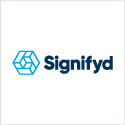The Top 10 Fraud Management Service Providers for 2023 & Beyond
With the internet at your disposal, you have greater access to eager consumers than ever before. Shoppers from around the globe can easily become regular customers. The world is your marketplace.
There’s a downside here, though: fraudsters can get to you just as easily as legitimate customers.
Online fraud management has become one of the greatest challenges you’ll face as a business. According to a recent report from CNBC, online fraud attempts jumped more than 25% in the first quarter of 2021. For high-risk verticals, the numbers are even more severe.
You can’t ignore this surge in fraud activity. Something needs to be done. But, like many merchants, you may not even know what options are available. Read on and we’ll explore this topic, and show you how to assemble the right fraud management strategy for your business.
Recommended reading
- The Top 10 Fraud Detection Tools You Need to Have in 2025
- Reverse Email Lookup: Tips, Tools & How to Detect Fraud
- ECI Indicators: How to Understand 3DS Response Codes
- How Link Analysis Works: Data Points & Best Practices
- Credit Card Fraud Prevention: A Gameplan for Businesses
- eCommerce Fraud Prevention: A Step-by-Step Guide for 2025
What is Fraud Management?
- Fraud Management
Fraud management refers to an overarching strategy designed to identify and block potential online fraud. A comprehensive fraud management strategy also allows merchants to prevent future fraud occurrences and recover revenue lost to fraudsters.
[noun]/frôd • man • ij • mənt/Retail fraud isn’t a new phenomenon, but the internet has opened new worlds of opportunity for fraudsters.
The scope and reach of eCommerce means crooks can attack almost anywhere. At the same time, online anonymity makes validating the buyer’s identity very difficult. All things considered, it’s no wonder we’re seeing such a massive surge in fraud reports.
An effective online fraud management solution must address the problem from multiple angles. In addition to recognizing and understanding different threat sources, you’ll need to know which prevention and response methods work best in each situation.
You’ll also need the ability to track down the true sources of fraud. This can be much more complicated than it sounds.
The Benefits of Effective Fraud Management
A robust fraud management system should leverage technologies like machine learning. This can greatly enhance an organization's efficiency and reduce risk by detecting fraud patterns in real-time with less human intervention.
Though some manual review will still be necessary, automated systems can greatly decrease time spent on this task. This will elevate team productivity significantly.
Your fraud management strategy may encompass:

Lastly, an effective fraud management system must ensure inter-departmental collaboration through a centralized interface. It should allow team members with varying permission levels to coordinate and implement anti-fraud strategies.
5 Key Components of Your Fraud Management Strategy
In the last section, we explained the main benefits of having a fraud prevention system. But, what are the first steps for building an effective, comprehensive fraud management strategy for your organization?
Here are the five key components you’ll need to prioritize in order to detect and manage risk:
The Trouble With “Pre-” vs. “Post-” Transaction Fraud Management
In a perfect world, we’d catch every act of fraud before it happens. No one would ever get ripped off. Unfortunately, we don’t live in that sort of world.
So, what happens when fraud prevention practices are too stringent. Or worse, what if it isn’t stringent enough?
Pre-Transactional Fraud Management
Automation can be a great time-saver, but fraudsters are constantly developing new ways to game the system. Like any automated strategy, filters can be fooled or bypassed altogether.There’s also the problem of parameters. You select the guidelines for what the system marks as fraud, which can be a delicate balancing act. Obviously, setting the parameters too wide allows more fraud to slip through. Tighten the filters to stop more potential fraud, however, and you’ll end up declining legitimate orders. In fact, it’s estimated that false declines cost US merchants $34 in lost sales for every $1 in “prevented” fraud.
Post-Transactional Fraud Management
Threats like friendly fraud and cyber shoplifting are effectively invisible to filters because it doesn’t even happen until after the transaction. Once a chargeback has been issued for these attacks, your only option is to contest it through the representment process.You need to find the true source of your chargebacks, then take steps to resolve each dispute trigger. But, as we mentioned earlier, that can be harder than it sounds. In friendly fraud situations, the real cause of the chargeback is usually quite different from the “official” cause reflected by the reason code. Your fraud management strategy should include extra measures to dig out the true source of each chargeback. Otherwise, you’ll be trying to solve the wrong issues with the wrong solution.
Is there a solution to these problems? Yes, and no.
One way to manage each situation is to determine how you plan to handle your fraud management. Will you opt for in-house management? Or, would your resources be spent more effectively by outsourcing?
In-House Fraud Management: Strengths & Weaknesses
The typical first response to fraud management is an attempt to use in-house resources. That’s a good starting point, as an in-house strategy can usually address easy-to-manage issues. It can clear out the “low-hanging fruit,” as it were.
Proponents of in-house management point out that their method is more cost-effective. They also argue that in-house fraud management allows them to react faster to situational changes and puts the process in the hands of people most familiar with the business.
There is some truth to this argument. However, fraud management is a multifaceted process. Requirements can vary dramatically according to industry, risk level, and other factors. A strategy that works for one merchant might be a complete bust for you.
Also, an in-house management department has several strikes against it right from the start:
Cost Efficiency
From the outside, fraud management DIYers seem to save money by using existing resources and eliminating fees. But wouldn’t your people be better utilized in other revenue-generating areas? The lack of efficiency here could ultimately cost you more than hiring professional providers.Reporting Transparency
Without transparent, in-depth reporting, it’s hard to know how much your fraud management actually costs or how much return on investment to expect. In-house profit and loss assessment typically lacks the kind of cost transparency that fraud management tools bring to the mix.Agility
Fraud doesn’t remain static. Techniques and technologies are constantly evolving. In-house teams may be able to recognize and adjust to new fraud and chargeback patterns, but usually not until after the fact. They can’t proactively put preventative measures in place.Insight
It’s true that no one knows the business better than the people who work it every day. By the same token, though, a fraud expert is daily immersed in the world of chargebacks, fraud, and emerging threats. Unless your people are fraud professionals, they’re going to miss things an expert provider will catch.Outsourced Fraud Management: Strengths & Weaknesses
It’s hard for in-house teams to determine where fraud comes from. Even merchants who pay attention to such details often misinterpret data or rely too heavily on reason codes. Plus, at some point, the job simply becomes too big. It requires expertise in too many different areas for a casual, “part-time” approach to be effective.
From that perspective, it’s easy to understand why outsourcing fraud management is better for many merchants. The benefits should be obvious: professional handling, less stress for you, and a clear and measurable ROI. Outsourced solution providers can adapt more quickly to changing conditions than in-house teams.
Of course, there are still downsides to consider. Some of these include:
Up-Front Investment
Outsourcing your fraud prevention may require a larger up-front investment than building out an in-house strategy over time. You can’t always ramp up service as you need (or are able) to do so. This could result in you paying for service capacity you’re not using.Procedural Transparency
You don’t have as much oversight as you would with an in-house team. Even with detailed reporting, there are certain operations that are going to remain opaque. This can be worrying for those who like to take a “hands-on” approach.Over-Automating
There are facets of fraud management that you simply can’t automate. If you rely on a solution provider that promises automated fraud management, it could lead to familiar problems (false positives, failing to identify new fraud sources, etc.).Build AND Buy: Leveraging a Multi-Layer Solution
Pre- versus post-transaction fraud management. In-house versus outsourced fraud management. What’s the best approach?
The truth is that you don’t have to limit your options to just one course of action. Instead, ask yourself: Which outsourced products or services would complement your in-house skillset? Which resources would be most useful before or after a transaction?
Allocating different practices to different parties could be the best approach to take. So, when it comes time to outsource to a professional or add various products, what should you look for?
Here are a few questions to consider:
- Is it Customizable? No two businesses have the same risk. A, off-the-rack, “one-size-fits-all” automated solution will ultimately be ineffective.
- What are the guarantees? And what are those guarantees based on?
- What do you get for your investment? Can you analyze future growth potential well enough to budget accordingly?
- Are there client testimonials? Are you able to identify current customers who share common practices/products/sales models with you?
- Is the vendor adaptable and agile? Will their services be sufficient to support future technology and fraud developments?
- Do they have real-world eCommerce experience? Partnering with providers who know the merchant experience will help minimize risk without compromising growth.
Top 10 Fraud Management Service Providers
The provider you should turn to for fraud solutions depends on the specific areas where you need help. This list is in no way exhaustive. However, it does showcase a few of the most reputable vendors and their specialties.
Also, note that these are objective recommendations. We took a detailed look at the highest-rated fraud prevention companies in operation today, and developed a rundown of the leading service providers.
Ratings and reviews were averaged based on real customer reviews from sources including G2, TrustRadius, Software Suggest, and Gartner. The “pros” and “cons” we mention are also paraphrased directly from real, firsthand customer reviews.

#1 | Signifyd
G2 ranks Signifyd as the #1 eCommerce fraud protection service available.
Signifyd provides an end‑to‑end Commerce Protection Platform. This platform leverages their Commerce Network to maximize conversion, automate customer experience, and eliminate fraud and customer abuse for retailers.
Signifyd uses big data and machine learning to provide a 100% financial guarantee against fraud and chargebacks on approved orders. This effectively shifts the liability for fraud away from eCommerce merchants, allowing them to increase sales and open new markets while reducing risk.
Pros:
- Integrates seamlessly and is easy to use
- The Payments Optimization module works with strong customer authentication (SCA), which helps with compliance for EU-based payments
- Transactions are generally approved in seconds
Cons:
- It can be very costly for an enterprise-type customer
- No real-time data
- Sometimes the human (non-automated) review process can take longer to complete in cases where additional verifying information is needed from the customer
Pricing: Call for a free quote.
- APIs
- Free Demo
- Automated Chargeback Prevention
#2 | Arkose Labs
Arkose Labs’s fraud deterrence platform eliminates sophisticated bots, frustrates fraudsters, and delivers user-centric account security. Combining real-time risk classification with dynamic challenges, the AI-powered platform uses enterprise-grade CAPTCHAs to defeat persistent bot and fraud farm attacks and protect platforms from account takeovers, fake account creation, spam, scraping, and more.
Pros:
- Easy to integrate with existing websites and workflows
- Constantly improving their product, adding new challenges, monitoring traffic, and suggesting additional integration strategies
- Tailors enforcement mechanisms to specific needs
Cons:
- Lacks an API endpoint that provides real-time monitoring and the capability to configure alerts
- Pricey; not ideal for start up companies seeking immediate ROI
- Requires front-end integration
Pricing: Call for a free quote.
- Free Demo
#3 | NoFraud
NoFraud is an eCommerce fraud prevention and checkout solution that protects businesses from fraudsters, eliminates chargeback losses, and provides smoother, more frictionless checkout experiences for trusted shoppers.
NoFraud integrates directly with eCommerce platforms to scan every order for signs of fraud in real-time. They use a combination of powerful algorithms and proactive human review to provide simple pass-or-fail decisions for every transaction. Their aim is to eliminate the need to manually review orders or monitor fraud scores, and provide a 100% financial guarantee for chargebacks.
NoFraud Checkout also dynamically adapts the number of input fields based on customer risk factors. More trustworthy shoppers are sped through, while riskier shoppers must provide more information.
Pros:
- Seamless integration; easy to use and navigate
- Excellent customer service and tech support
- Decreases chargebacks
Cons:
- Software is extremely sensitive; flags some orders needlessly
- The integration ranks at the higher end of the pricing scale
- They only cover purchases up to $2,000, but will increase the limit (for an additional fee)
Pricing: Call for a free quote
- APIs
- Free Demo
#4 | DataDome
DataDome protects mobile apps, websites and APIs from online fraud, including scraping, scalping, credential stuffing, and account takeover.
They also protect against layer 7 DDoS attacks and carding fraud. Their AI-powered bot detection engine processes more than one trillion pieces of data every day, from 25 worldwide points of presence. This helps protect some of the world’s largest global eCommerce businesses in real time.
DataDome is easily deployed and is compatible with 100% of web infrastructure technologies, thanks to strong technical and business partnerships with market leaders. It runs anywhere, in any cloud, and is compatible with multi-cloud and multi-CDN setups.
Pros:
- Seamless, instinctual interface without a lot of noise
- Customizable rulesets with excellent onboarding
- Provides SDK (software development kit) integrations that simplify coding obfuscations and coupling challenges
Cons:
- No ‘out of box’ API augmentation (manages internal systems only)
- Software is sensitive; can lead to false negatives
- No APIs with intro platform
Pricing: Entry level price of $2,990
- Free Quote
#5 | Seon
SEON helps its customers uncover fraud patterns and generate new revenue streams. Intelligent risk scoring with AI and machine learning adapts to your business risk evaluation. This means you get full visibility and complete control over every interaction, order, account, transaction, and opportunity.
Pros:
- Seamless integration with a wide range of data points
- Detailed IP geolocation checks, screening of personal data for fraudulent indicators, checks social media profiles, and the rules management system is quite easy to use without specific knowledge
- Platform is extremely well organized
Cons:
- Lacks the means to export a full blacklist or internal scoring data points
- Loading customers into the system can take a while
- IP checks could be more precise with mobile IPs
Pricing: Starting at €299
- APIs
- Free Demo
#6 | Riskified
Riskified uses powerful machine-learning algorithms to instantly recognize good customers and weed out bad ones with a 100% chargeback guarantee. Merchants can safely approve more orders, expand internationally, and eliminate the costs of fraud while providing a frictionless customer experience.
Pros:
- It's easy to filter through thousands of orders to identify general trends
- Obtain quick responses and solutions when submitting claims and reimbursements
- The effectiveness of the product; does not require heavy maintenance
Cons:
- Sometimes people are flagged for no reason
- Focusing purely on fraud prevention means merchants in the EU need to handle 3DS/PSD2 on their own
- There are no mobile SDKs, yet more than 50% of eCommerce is mobile in some countries
Pricing: Call for a free quote
- APIs
- Chargeback Guarantee
- Real-Time Monitoring
#7 | Sift
Sift, formerly Sift Science, empowers companies of all sizes to unlock revenue without risk. Industry leaders like Twitter, DoorDash, and Twilio rely on Sift to stay competitive and secure.
Sift prevents fraud with industry-leading technology and expertise, an unrivaled global data network, and a commitment to building long-term partnerships with our customers.
Their Digital Trust & Safety Suite prevents fraudulent payments, fake accounts, spam, scams, and account takeover. They reduce false positives and power frictionless experiences in the process.
Pros:
- Easy to use and provides excellent visibility about any suspicious behavior
- Automate workflows are very flexible and easy to understand
- Straightforward integration
Cons:
- Route building and initial configuration of workflows could be improved
- Does not always accurately link accounts
- Product is priced relatively high
Pricing: Volume based pricing. Call for a free quote
- APIs
- Free Quote
- Real-Time Monitoring
#8 | Kount
Kount’s AI-driven Identity Trust Platform protects the complete customer journey for more than 9,000 leading brands and payment processors.
Powered by its Identity Trust Global Network ™, Kount, An Equifax Company, links billions of trust and fraud signals to protect every interaction. It provides end-to-end coverage from account creation and login to payments and disputes.
Pros:
- Kount RIS API is very clear, concise, and easy to implement
- The approve/decline model has proven to be a seamless experience
- Also checks a customer’s chargeback history
Cons:
- Many different clients and customers are automatically flagged with a low Omniscore
- Decline rules are very limited
- Datamart BI reporting tool is not optimized, and limited
Pricing: Two-tier pricing based on small business and mid-market models
- APIs
- Real-Time Monitoring
- Payment Verification
#9 | ClearSale
ClearSale’s balanced approach to eCommerce fraud protection and prevention yields the highest approval rates and lowest false-positive rates in the industry.
Having been in business for over two decades and running, and with a 99% retention rate, that’s really saying something.
ClearSale does business in over 160 countries. They’ve won several awards for stellar customer service and proven value as a top fraud prevention brand.
Pros:
- Completely seamless integration
- Ease of use and dashboard implementation
- Extremely high customer service ratings
Cons:
- Unclear service charges
- KPI’s and analytics are not always communicated effectively
- Unclear attribution factors corresponding to the source of the converted sale
Pricing: Two-tiered payment plan, with a free trial period for either.
- Free Trial
- Plug and Play Service
- Real-Time Monitoring
#10 | Prove
Prove is an emerging star in the fraud detection services game. They offer phone-centric solutions that enable clients to acquire new consumers and engage with their existing consumers.
This is done by removing friction while bolstering security and enhancing consumer privacy & consumer choice. Prove Pre-Fill™ enables companies to drive more signups by auto-filling forms with authenticated identity data, to accelerate revenue while mitigating fraud across mobile, desktop, tablet, contact center, and in-store channels.
Pros:
- Seamless integration and swift onboarding
- Offer a robust series of products, from Payfone Pre-fill to soft authentication like Payfone TrustScore, to even more friction-induced authentication products like Instant Link
- Offers additional optimization services
Cons:
- Password-protected documentation is slow-loading and difficult to sort
- Slight overlap between Trust and Verify products
- Some of Prove's products rely on third-party data such as Mobile Network Operations (MNOs) and credit bureaus, but their latest mobile-first products do not have this dependency and rely only on data gathered via SDK
Pricing: Call for a free quote
- APIs
- Real-Time Monitoring
FAQs
What is the concept of fraud management?
Fraud management refers to an overarching strategy designed to identify and block potential online fraud. A comprehensive fraud management strategy also allows merchants to prevent future fraud occurrences and recover revenue lost to fraudsters.
What are fraud management strategies?
An effective online fraud management solution must address the problem from multiple angles. In addition to recognizing and understanding the different types of fraud, you’ll need to know which prevention and response methods work best in each situation.
What are the key types of fraud?
Fraud can be generally divided into three groups. First-party fraud (like credit card fraud and wire fraud), second-party fraud (money muling and laundering), and third-party fraud (like cyber shoplifting or friendly fraud).
What is the strongest deterrent to fraud?
A robust fraud management system, leveraging technologies like machine learning, can greatly enhance an organization's efficiency and reduce risk by detecting fraud patterns in real-time with less human intervention.
Though some manual review will still be necessary, automated systems can greatly decrease time spent on this task, elevating team productivity.
What is the fastest-growing form of fraud?
Post-transactional fraud, like friendly fraud and return fraud, are among the fastest-growing forms of fraud.
What are typical red flags of fraudsters?
Common red flags include large orders from new customers, different payment methods on different orders with the same shipping address, and different orders with the same IP address. Check out our full list of fraud red flags and how to respond to them.














